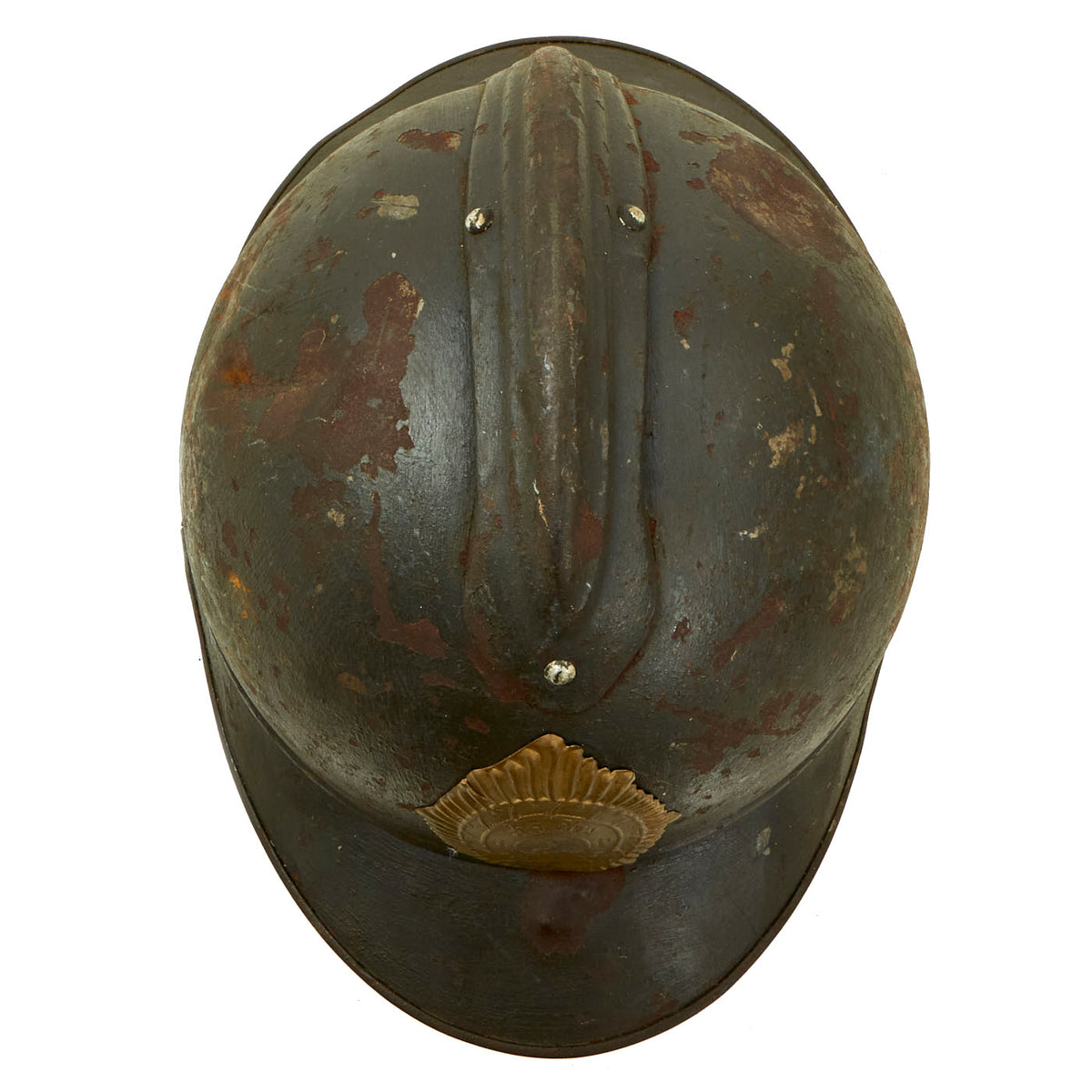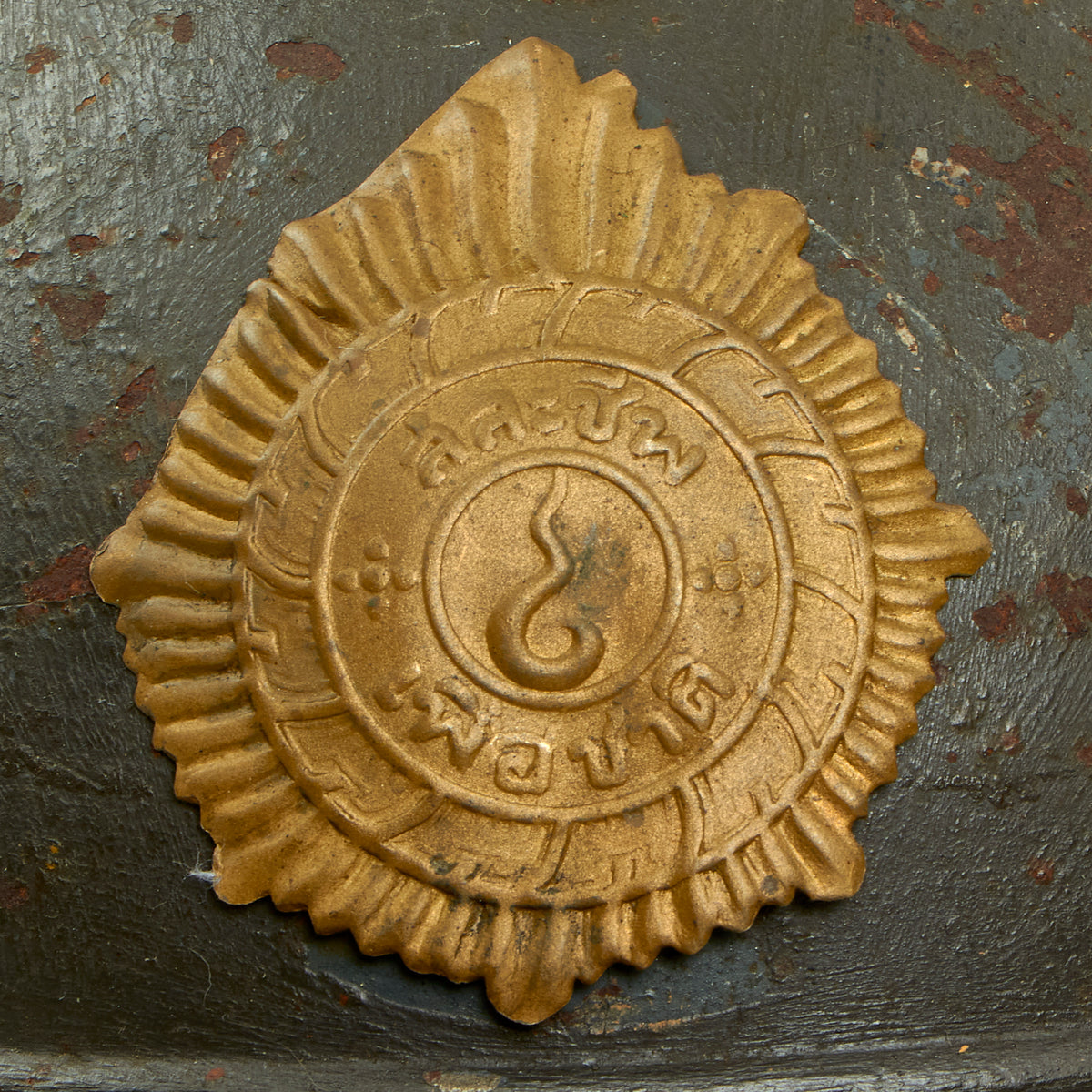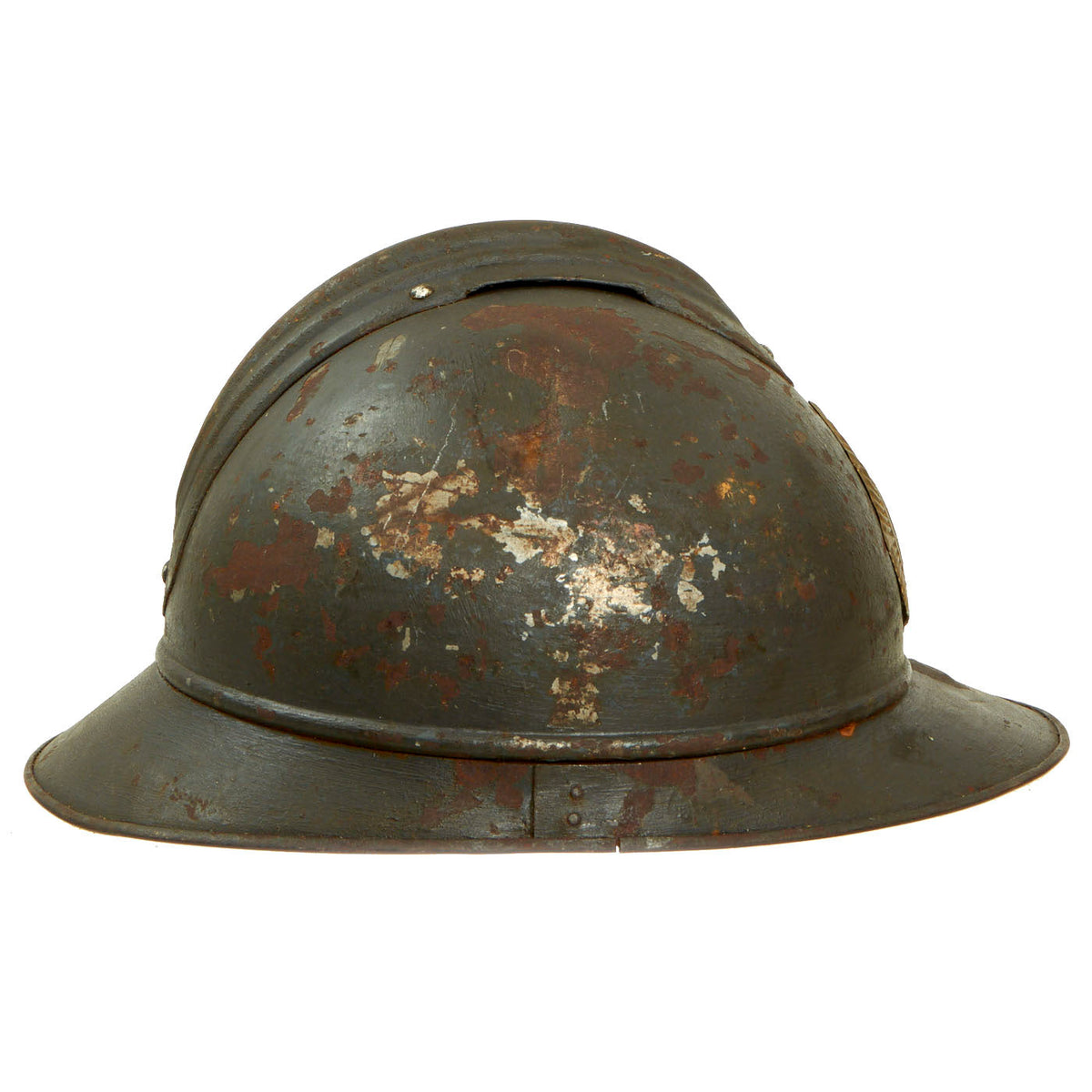Original French WWI Model 1915 Adrian Helmet Shell in Horizon Blue with Siam Thailand Badge Original Items
$ 195,00 $ 78,00
Original Item: Only One Available. At the outbreak of World War I in August 1914, soldiers in the French Army wore the standard kepi cap, which provided no protection against injury. The early stages of trench warfare proved that even basic protection of the head would result in a significantly lower mortality rate among front-line soldiers. By the beginning of 1915, a rudimentary steel skull-cap (calotte métallique, cervelière) was being issued to be worn under the kepi.
Consequently, the French staff ordered development of a metal helmet that could protect soldiers from the shrapnel of exploding artillery shells. Since soldiers in trenches were also vulnerable to shrapnel exploding above their heads, a deflector crest was added along the helmet’s axis. Branch insignia in the form of a grenade for line infantry and cavalry, a bugle horn for chasseurs, crossed cannon for artillery, an anchor for colonial troops and a crescent for North African units was attached to the front. Contrary to common misconception, the M15 helmet was not designed to protect the wearer from direct impact by rifle or machine gun bullets. The resulting headgear was credited to Intendant-General Louis Auguste Adrian.
The helmet proved to be fairly effective against shrapnel and it was cheap and easy to manufacture. As a consequence, more than twenty million Adrian helmets were produced They were widely adopted by other countries including Albania, Belgium, Brazil, China, Czechoslovakia, Greece, Italy (including license-built versions), Japan, Latvia, Luxembourg, Mexico, Morocco, Peru, Poland, Romania, Russia, Serbia, Spain, Siam, Turkey, the United States, U.S.S.R., and Yugoslavia, each of these states adding its own insignia to the front of the helmet.
This is a nice example of a genuine World War I M-1915 French made “Adrian” steel helmet, which looks to have seen long service up into WWII. During WWII Thailand held some of largest Japanese Military bases. If you were a nation occupied by the Japanese in WWII you find yourself awash in Japanese military materiel upon their surrender. Suddenly your army (such as it is) has lots of helmets. During WW2 these helmet were re-issued to the Thai army as one of the standard helmets with a “Chankra” badge (Inscription in Thai : “Sacrifice for fatherland”). The helmet shows signs of being repainted several times, which was not uncommon to see a few coats of paint on a helmet in the French Army, especially a helmet as early as this one which saw use during WWII.
The early 1st Pattern leather liner is not present, but the band is still retained. The helmet does not have a chin strap. Overall condition is good, but definitely worn.
This is not a helmet that spent the war in a depot. If you were looking for a nicely priced Adrian Helmet to fill out your WWII collection, this is a great chance!
Fast Shipping with Professional Packaging
Thanks to our longstanding association with UPS FedEx DHL, and other major international carriers, we are able to provide a range of shipping options. Our warehouse staff is expertly trained and will wrap your products according to our exact and precise specifications. Prior to shipping, your goods will be thoroughly examined and securely secured. We ship to thousands clients each day across multiple countries. This shows how we're dedicated to be the largest retailer on the internet. Warehouses and distribution centres can be located throughout Europe as well as the USA.
Note: Orders with more than one item will be assigned a processing date depending on the item.
Before shipping before shipping, we'll conduct a thorough inspection of the items you have ordered. Today, the majority of orders will be delivered within 48 hours. The delivery time will be between 3-7 days.
Returns
The stock is dynamic and we cannot completely manage it because multiple stakeholders are involved, including our factory and warehouse. So the actual stock may alter at any time. It's possible that you may not receive your order once the order has been made.
Our policy is valid for a period of 30 days. If you don't receive the product within 30 days, we are not able to issue a refund or an exchange.
You can only return an item if it is unused and in the same state as the day you received it. You must have the item in its original packaging.
Related products
Uncategorized
Uncategorized
Uncategorized
Uncategorized
Uncategorized
Uncategorized
Armoured Fighting Vehicles of the World: AFVs of World War One (Hardcover Book) New Made Items
Uncategorized
Uncategorized
Uncategorized
Uncategorized
Uncategorized
Uncategorized
Uncategorized
Uncategorized
Uncategorized
Uncategorized
Angolan Rebel 1970s era 60mm Inert Display Mortar from Angolan Civil War Original Items












































































